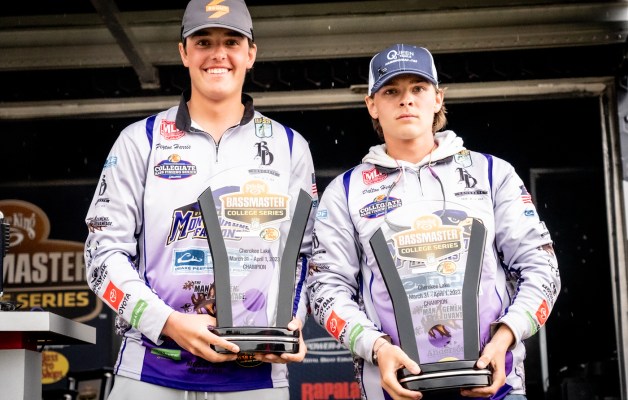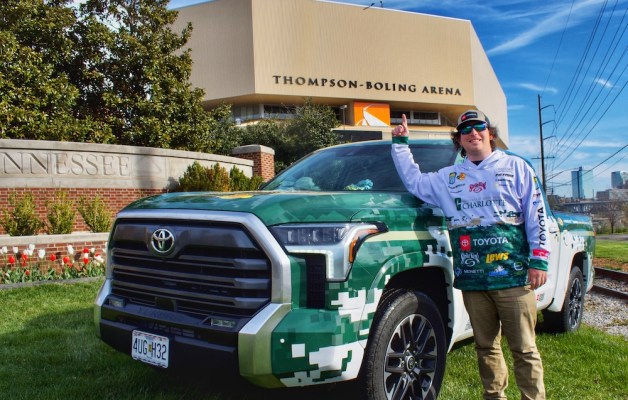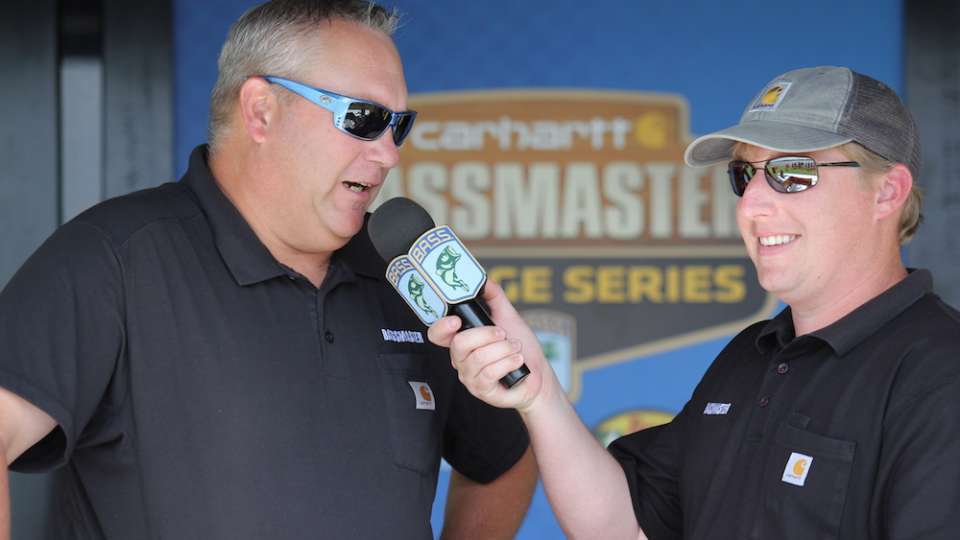
College anglers have fished the Bassmaster Elite Series for several years now, but recent wins by graduates have made the B.A.S.S. folks who run the Carhartt College Series proud.
“Most definitely. We take a lot of personal satisfaction in their success,” said Hank Weldon, senior manager of college, high school and juniors. “There’s a lot of hard work from a lot of people to make things run.”
Weldon’s one of the driving forces. The son of long-time B.A.S.S. tournament director Trip Weldon, the chip off Trip takes on many roles – he’s the head of college recruitment, the registrar, dean of college and speaker (emcee) all rolled up into one.
“Hank puts his heart and soul into the college,” said B.A.S.S. Nation director Jon Stewart, to whom Weldon reports.
In explaining the significance of a college pedigree, Weldon recalled a talented group of anglers at one of his first college bracket events, which have sent collegians to the Classic since 2012. Matt and Jordan Lee of Auburn, Dustin Connell of Alabama and Zach Birge of Oklahoma State fished against one another, and all have since graduated to seek advanced degrees, with two recently recording major firsts.
Jordan Lee won the 2017 GEICO Bassmaster Classic presented by DICK’S Sporting Goods in March, and Connell just won the Academy Sports + Outdoors Bassmaster Elite at Ross Barnett.
“I’m just super proud of both of them,” Weldon said. “Some serious talent rolled out that year of the bracket.”
There are around a dozen or so graduates of the college program who’ve made the grade and currently fish on the Elite Series. Weldon admits there’s a shared sense of achievement among B.A.S.S. workers, and even moreso when one of their former anglers excels.
The college events can be looked at like Bass Fishing 101. For many young anglers, the competitions were among their first lessons in tournament fishing. The more they answered roll call, the more they prepared to wear the cap and gown.
“I kind of look at it that we’ve helped trained these guys to compete in multiple-day events,” Weldon said. “We put them on diverse fisheries, they deal with sponsors, develop stage presence. College competition is about as close to the big time as they can get.”
The idea for college competitions started inauspiciously in 2006 with six teams and has grown to more than 230 schools, with the likes of Bethel University (the first) and others offering scholarships. Stewart said Weldon is one reason for the growth.
“Hank goes to schools and talks to all sorts of folks,” he said. “At the office, he’s always on the phone talking to advisors, faculty that are interesting in getting their club signed up. Half his days are just getting schools to join us. From the numbers, he’s doing a great job. That’s what’s impressive.”
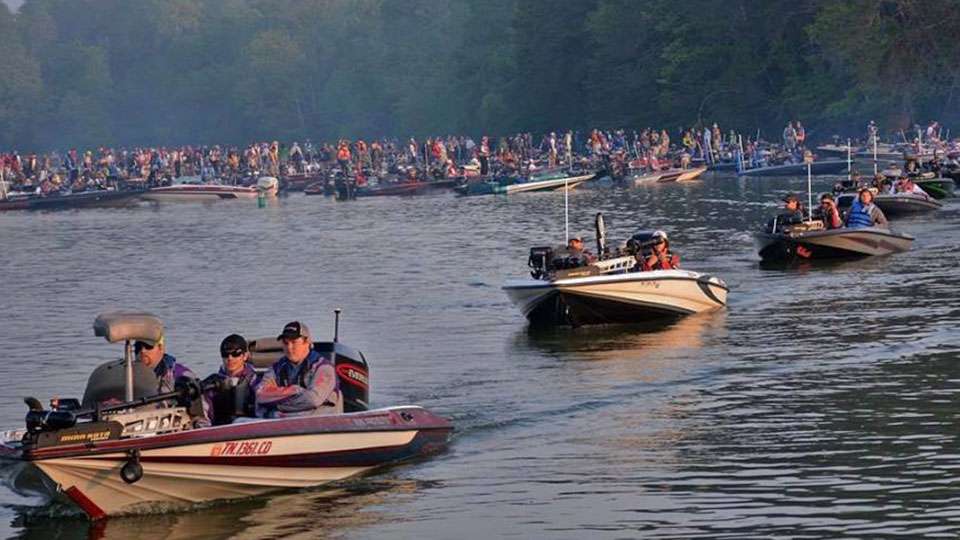
Those numbers include “crazy” growth among high schools, which are almost triple the college numbers. Weldon said there are somewhere around 600 high schools with 7,000 anglers competing.
In fact, high school anglers from around the southeast recently came together for a huge meet on Lake Chickamauga.
“Last week, we ran a 347 boat-field for high school, which was the largest B.A.S.S. run field ever in the history of the organization,” Weldon said of the 2017 Costa Bassmaster High School Southern Open presented by DICK’S Sporting Goods. “There were three people to a boat, two anglers and a caption, so more than 1,000 people. It was a full festival day of just registering all of them. We had all the sponsors there – it was almost as much of a party as it was a tournament registration.”
Weldon said the work at the tournament is actually somewhat easier than all the preliminary documentation of teams, names of anglers and inputting them into the database. He does have help.
“Emily Hand deserves a huge shoutout,” he said. “She is the person behind all the paperwork, working with the clubs, dues coming in. She’s a key person in our team.”
There is a regular B.A.S.S. tournament crew of seven that travels to events and about a dozen CTAs, or contract tournament associates that work the full gamut of B.A.S.S. tournaments.
“All of our events are run the same,” Stewart said. “That’s our mindset, our philosophy. We run a high school or juniors, college, just like we would an Elite event. We don’t cut any corners.”
Weldon and folks are hoping for more top circuit victories, and just need one of the college anglers to win a Toyota Bassmaster Angler of the Year title to complete the B.A.S.S. trinity.
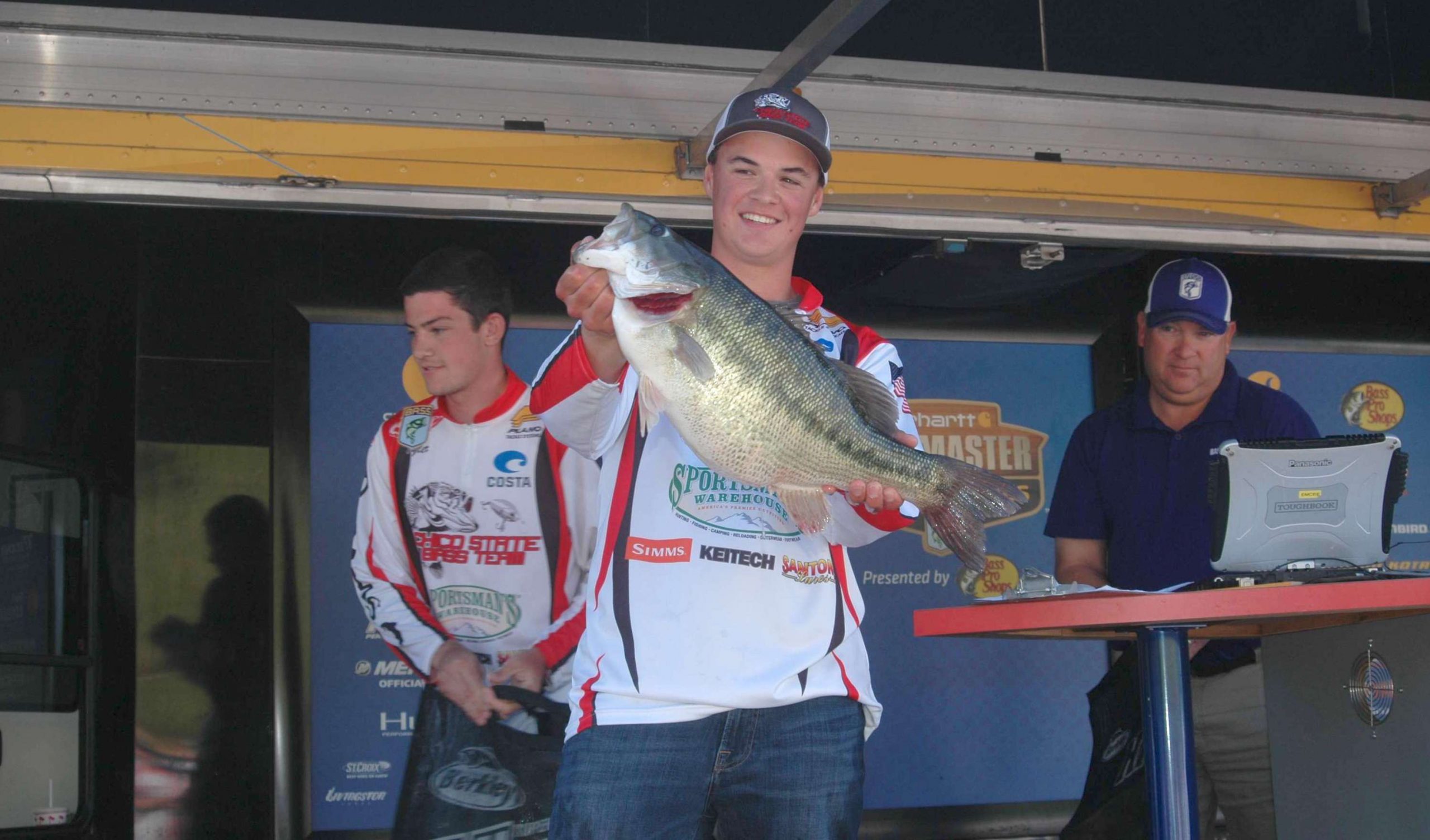
BIG DOINGS FROM UNDERCLASSMEN
First it was huge spotted bass then a monster largemouth. Weldon and his crew have seen some lunker fish cross the scales in the past several weeks.
During the Carhartt Western Conference Regional presented by Bass Pro Shops on California’s Lake Shasta in April, there were a number of trophy spots weighed, but none was bigger than the brute in the bag of Chico State’s Tyler Firebaugh and Chad Sweitzer. The 9-10 fish landed by Sweitzer wowed the crowd and helped his team win the title.
“When I first saw that bass my fishing heart fluttered a little bit,” Weldon said. “I’ve seen 30-pound limits and [four-day] tournament winners that passed the century mark, so there’s not much that surprises me anymore. But that big spotted bass was one of those WOW moments.”
Weldon said Sweitzer’s spotted bass, which weighs 1-10 less than Nick Dulleck’s pending IGFA world record 11-4 spot, is equivalent of a largemouth approaching 20 pounds. “It is the biggest spotted bass ever weighed in a Bassmaster tournament,” he said.
At the High School Southern Open, Chase Carter of Georgia North West HS, brought in a 10-11 largemouth. It was the biggest bass ever weighed in a high school event.
“We’ve seen some incredibly large fish, and that’s pretty exciting,” Weldon said.
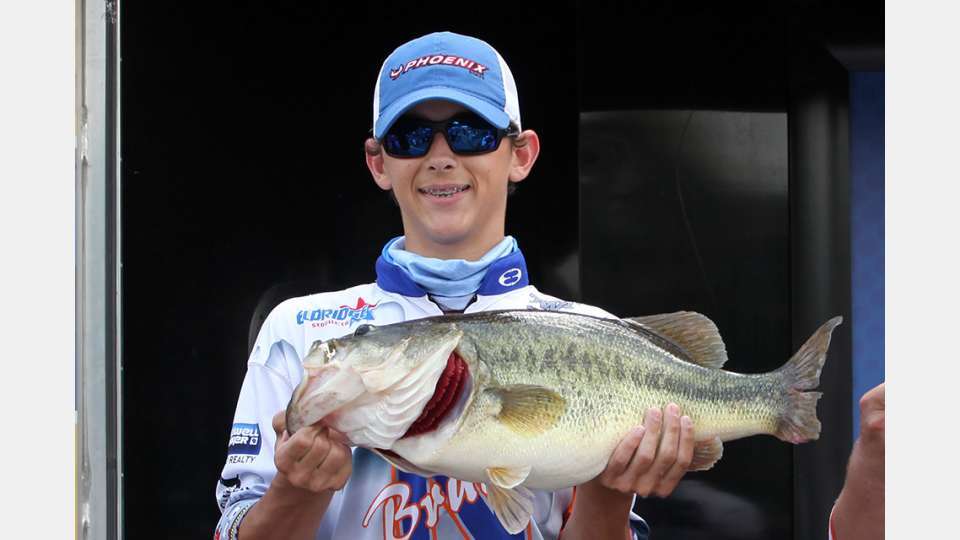
OUTDOOR INDUSTRY A JUGGERNAUT
The numbers are in, and it shows outdoor recreation is a major economic player in the U.S., generating $887 billion in spending each year while supporting 7.6 million jobs. Those impressive figures were released by the Outdoor Industry Association (OIA) in a report from Southwick Associates.
The money spent annually is larger than motor vehicles and parts ($465 billion) and pharmaceuticals ($466 billion), and the job numbers top real estate, rentals and leasing (2.1 million) and education (3.5 million) combined.
Other impressive figures are the $65.3 billion generated in federal tax revenue each year and $59.2 billion in state and local tax revenues.
At 483,000, there are more Americans employed by hunting and fishing than oil and gas extraction (180,000), the report states. Fishing itself generated $11.8 billion in sales of gear, accessories and vehicles and almost $24 billion trip-related expenses for a yearly total of around $36 billion.
Wow. But the numbers aren’t the entire story. Rob Southwick said the report shows benefits to society that warrants further investments in outdoor recreation.
“From helping people reduce stress, exercise more and overall improve their health, the tangible benefits of providing an abundant of outdoor activities go far beyond dollars and cents,” he said.
The OIA serves more than 1,200 manufacturers, suppliers, sales representatives and retailers that cover popular activities like camping, trail sports, bicycling, fishing, hunting, off-roading, water sports, wildlife viewing, snow sports and more.




